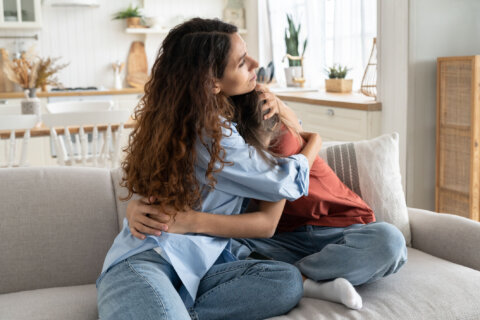WASHINGTON — Sometimes, it seems like American parents, in our quest for perfection, specialize in leaching parenting of every ounce of joy. We try so mightily to protect our children from danger, disappointment and emotional pain that we ironically miss the real risks to our kids’ long-term happiness.
Take Halloween.
Many historians believe Halloween originated not with razor blades being inserted into apples, but with the ancient Celtic festival of Samhain, when people lit outdoor bonfires and put on costumes to scare off ghosts that lingered in between fall and winter. It was a tricky time of year between the abundance of the fall harvest and oncoming winter frugality, a moment of both celebration and superstition, and we needed a timeout to process all the contradiction and anxiety. (Much like parenting itself.)
Today, Halloween means — mostly — costumes and candy. Oct. 31 is many kids’ favorite holiday, certainly making the top three, along with Thanksgiving and Christmas. How could we screw this one up?
Well, for parents, Halloween is not all treats — it’s yet another time to play the serious heavy. We focus on kidnappings, what too much chocolate can do to one’s stomach lining and the threat of poison in candy corn. Other big worries that we shouldn’t worry about: getting or making exactly the best costume ever for your kid; trying to influence or improve your kid’s dress-up choices, and preventing kids who are “too old” (whatever that imaginary cutoff is) from absconding with your candy supply.
All this regulation is a sign of parenting taken too far. Because the biggest risk to kids on Halloween is far more mundane: crossing the street. Children are more than twice as likely to be killed by a car while walking on Halloween than any other night of the year, according to Safe Kids USA and the Centers for Disease Control.
The reasons are simple: Darkness limits drivers’ visibility; more kids run across the streets in the middle of the block, and many kids are wearing dark Halloween costumes. This year, Halloween falls on a Saturday — by itself a risk factor for pedestrian-auto accidents. So nag the kids (“cross at the green, not in-between!”) and invest in some reflective lights for their costumes. And while doing so, forget about the infinitesimal risks of stranger abductions and unmitigated sugar consumption.
Here’s how we parents can enjoy Halloween:
- Don’t buy or make any kids’ costumes until the week before Halloween. Kids change their minds. Experimenting with temporary identities is part of the zany fun of Halloween.
- Let your kids eat as much candy as they want for a night or two. They’ll remember and resent your control-freakish killjoy restrictions far longer than any stomachache could possibly last. And they will probably just sneak Reese’s into bed, which never ends well for the sheets or for parents.
- Give candy to all kids who grace your doorstep — even if they are taller than you and years into puberty. In costume or not. Even 6-foot, 2-inch teenagers are drawn to free Hershey’s (or a wistful visit back to the innocence of childhood). Smile like you would at a cute toddler dressed as a princess — because teenagers are really just very large 2-year-olds.
- Never psychoanalyze your children’s (or your own) costumes. My macho-athlete son went as a cheerleader one year (he made a very cute blonde). His sister was Princess Barbie Vampire (with blood dripping from her lips) another year. I regularly dress up as a witch. There is true joy to be found in exploring a new facet of your personality on Halloween, as long as no one wonders out loud about what you’re really trying to say with your costume.
Lastly, let’s have some fun. Why ruin Halloween by taking anything too seriously? At least for one night of the year.
Leslie Morgan Steiner a contributing writer to WTOP.com.






